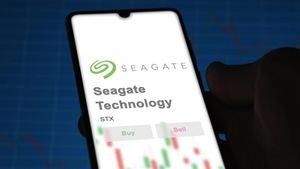
November 5, 2025 – The cryptocurrency landscape in late 2025 is proving to be a crucible for established altcoins like XRP and Solana, as they navigate a maturing, fragmented ecosystem and face relentless pressure from a new wave of competitors. While both digital assets boast significant market capitalization and technological advancements, recent market movements and underlying trends reveal a complex battle for sustained dominance, challenging their long-held positions and prompting a re-evaluation of their future trajectories.
The immediate market reaction to these shifting dynamics has been varied. XRP, despite monumental corporate successes for Ripple Labs, has seen a somewhat "muted" price response, signaling a potential decoupling between enterprise value and token performance. Conversely, Solana (SOL) has experienced a significant price plunge in recent weeks, even amidst strong institutional inflows and the launch of Solana spot Exchange-Traded Funds (ETFs). This divergence underscores a critical juncture for the broader altcoin market, where investor sentiment is increasingly discerning, prioritizing tangible utility and robust ecosystems over past glories. The challenges faced by these prominent altcoins are indicative of a broader market trend where innovation, adaptability, and real-world adoption are becoming paramount for long-term survival and growth.
Market Impact and Price Action
As of early November 2025, XRP has seen its price fluctuate between $2.24 and $2.47 USD, maintaining its position as the fourth-largest cryptocurrency with a market capitalization ranging from $137 billion to $156 billion USD. Despite a recent 24-hour decline of approximately 1.85% and a weekly drop of 14.41%, institutional interest remains robust, with "mega whales" reportedly accumulating 1.27 billion XRP since mid-October, valued at around $3.15 billion. Ripple Labs, the company behind XRP, recently announced a staggering $500 million strategic funding round, boosting its valuation to $40 billion. However, this corporate triumph has yet to translate into a significant immediate price surge for XRP, suggesting that market participants are awaiting further catalysts. The mid-November 2025 anticipation of XRP spot ETF approvals is widely viewed as a crucial potential driver for future price action. Historically, XRP has shown substantial volatility, with a 352.97% increase over the last year, but also experienced a prolonged drawdown from December 2017 to November 2024. Its all-time high was $3.84 on January 3, 2018, or $3.65 on July 18, 2025.
Solana (SOL), currently trading between $156.55 and $198 USD, holds a market capitalization of roughly $89.66 billion to $91.75 billion USD, placing it among the top 10 cryptocurrencies. Solana entered November with a seemingly strong bullish momentum, having attracted over $381 million in institutional inflows during October. Historically, November has been a strong month for Solana, averaging a 13.9% monthly return. However, despite these positive indicators and the late October 2025 launch of Solana spot ETFs, SOL has experienced a significant downturn, plunging nearly 20% in the last week, over 30% in the last month, and approximately 40% from its September peak of $250, pushing it into "bear market territory." Solana's all-time high was $294.85 on January 19, 2025, following explosive growth in past cycles, including a remarkable 10,182% return in 2021. This recent price action signals a growing investor cautiousness, despite underlying network activity.
Comparing these two, XRP's price action appears more influenced by regulatory developments and institutional accumulation, with corporate funding rounds not immediately translating to token value. Solana, despite strong institutional backing and historical performance, is demonstrating vulnerability to broader market corrections and competitive pressures, leading to a significant price depreciation. Both face challenges from newer Layer 1 blockchains and evolving market sentiments that demand more than just historical prominence.
Community and Ecosystem Response
The crypto community's response to these developments is nuanced. For XRP, the "muted" price reaction following Ripple Labs' substantial funding round has sparked discussions regarding the token's independence from its parent company's enterprise success. While regulatory clarity in the U.S. has been a long-awaited victory, the broader community remains watchful for the impact of global regulatory environments and the anticipated XRP spot ETF approvals, which are seen as critical for reigniting bullish sentiment. Concerns about XRP's perceived centralization, due to Ripple (NASDAQ: RPL) holding a significant portion of the supply, continue to be a talking point among those who prioritize decentralization.
Solana's ecosystem, despite the recent price plunge, shows signs of resilience in user engagement. On-chain data indicates that DeFi Total Value Locked (TVL) experienced a 12% month-over-month increase earlier in November, suggesting continued utility and participation within its decentralized applications. However, a 30% drop in active users during Q3 2025 highlights a potential challenge in user retention amidst fierce competition and past network stability issues. Crypto influencers and thought leaders are increasingly debating Solana's "performance-first" strategy, questioning its long-term viability against new, equally performant Layer 1s and Ethereum's (ETH) robust Layer 2 ecosystem. The broader sentiment on crypto Twitter and Reddit reflects a growing demand for sustainable, secure, and truly decentralized solutions, putting pressure on established chains to continuously innovate and address their vulnerabilities.
What's Next for Crypto
The immediate future for XRP hinges significantly on the anticipated mid-November 2025 approvals for XRP spot ETFs. Such approvals could unlock substantial institutional capital and provide a much-needed catalyst for its price action, potentially bridging the gap between Ripple's corporate valuation and XRP's market performance. However, ongoing global regulatory uncertainties and the emergence of new fintech platforms like Digitap ($TAP) in cross-border payments will continue to test XRP's dominance.
For Solana, the path forward involves addressing its historical network stability issues and fending off intense competition from newer Layer 1 blockchains such as Mpeppe, MegaETH, and Hyperliquid, which are also adopting a "performance-first" strategy. Ethereum's robust Layer 2 ecosystem, with its focus on scalability and low data fees, poses a significant strategic challenge to Solana's relevance. While institutional inflows and Solana spot ETFs are positive, the debate surrounding its balance between performance and decentralization, along with concerns over Maximum Extractable Value (MEV), will remain critical for long-term investor confidence.
More broadly, the altcoin market in late 2025 is characterized by a "maturing, more fragmented crypto ecosystem." While many altcoins remain below their previous all-time highs, there is cautious optimism for a potential "altcoin season" in 2025, driven by strong market fundamentals, increased institutional adoption, improved regulation, and rising demand from treasuries. The "Altcoin Season Index" is currently low (around 26), indicating a preference for Bitcoin (BTC) and Ethereum (ETH). However, if Bitcoin dominance stabilizes or declines below 62%, and global liquidity increases, capital rotation into altcoins could accelerate. Strategic considerations for projects and investors will increasingly focus on identifying altcoins with "clear product value, strong teams, and real-world adoption," moving beyond speculative hype. The total cryptocurrency market capitalization, excluding Bitcoin, is projected to reach $3.4 trillion by the end of 2025, underscoring the immense growth potential within the altcoin space.
Bottom Line
The current market environment underscores a critical truth for established altcoins like XRP and Solana: past success does not guarantee future dominance. Both assets demonstrate resilience and have significant technological underpinnings, but they are operating in an increasingly competitive and discerning market. XRP's ability to capitalize on regulatory clarity and ETF approvals, while navigating centralization concerns and new payment competitors, will define its next chapter. Solana's challenge lies in proving its network's stability and maintaining its competitive edge against a wave of high-performance Layer 1s and Ethereum's expanding Layer 2 ecosystem, all while addressing decentralization debates.
Key takeaways for crypto investors and enthusiasts include the importance of due diligence beyond market cap, focusing on projects with genuine utility, strong development teams, and clear roadmaps for adoption. The long-term significance of these developments points to a market that is professionalizing, where speculative exuberance is giving way to a demand for tangible value. Important dates to monitor include mid-November 2025 for XRP spot ETF decisions and ongoing reports on network stability and user growth for Solana. The broader altcoin market's trajectory will also be heavily influenced by Bitcoin's dominance and global liquidity trends, acting as crucial metrics to monitor for signs of a broader altcoin rally. The evolution of XRP and Solana will serve as a bellwether for how established players adapt to the relentless pace of innovation and competition in the ever-evolving crypto landscape.
This article is for informational purposes only and does not constitute financial or investment advice. Cryptocurrency investments carry significant risk.





